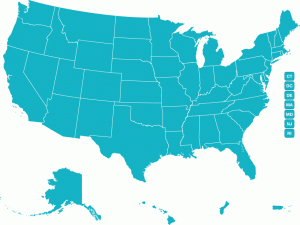There are a lot of issues competing for attention in a governor’s State of the State address from pensions to health care to infrastructure to education. So it’s notable of the 31 speeches given this month, Career Technical Education (CTE) has found its way into roughly 40 percent of them, particularly because governors use this speech as a way to outline their priorities for the year and highlight successes.
In some instances, CTE was only mentioned in passing such as in Alaska, where the governor called for increasing educational opportunities for CTE. However, states such as in Indiana, California, and Nevada among others, governors proposed major investments in CTE as a means to prepare a skilled workforce to compete for tomorrow’s jobs and position the state for economic prosperity.
Here is a quick recap of the highlights as of January 26. We’ll continue tracking the remaining speeches and budget proposals, and bring you an update in the coming weeks.
California
Although CTE didn’t make it into Gov. Jerry Brown’s speech in California, it received a major boost in the governor’s proposed budget, which was released shortly after. Brown proposed the CTE Incentive Fund, which calls for $750 million over three years in one-time funding. The grant program would require a dollar-for-dollar match by the participating K-12 schools and encourages collaboration with other local agencies to form regional partnerships.
The budget also proposes nearly $30 million to grow and expand apprenticeships.
Indiana
Declaring his budget the “education budget,†Gov. Mike Pence proposed increasing CTE funding by $20 million a year. The money would be directed through the state’s Indiana Works Councils.
“By providing $20 million a year to create more career and vocational opportunities and improving the way we fund those courses, we will dramatically increase the number of students who graduate career-ready, and increase—by fivefold—the number of students who graduate with an industry-recognized credential by 2020,†Pence said.
Kentucky
Gov. Steve Beshear praised the state’s CTE system in his State of the Commonwealth.
“Recognizing that the four-year university path isn’t the best route for everyone, we’ve made our career and technical programs more rigorous and applicable to real-life jobs that demand high-level technical knowledge. These aren’t the so-called ‘shop classes’ of yesterday but modern training with a touch academic foundation,†Beshear said.
Beshear also called on the state to implement the recommendations of the Dual Credit Task Force to improve the quality of these courses and help students cut the time and cost of their postsecondary education.
Nevada
Gov. Brian Sandoval used his speech as a bully pulpit for increased education spending. Citing Nevada’s worst-in-the-nation high school graduation rate as “our most troubling education statistic,†Sandoval called for $1.1 billion in additional funds for education. Specific to CTE, Sandoval proposed new grant programs to ensure students are college- and career-ready, including an expansion of CTE, Jobs for America’s Graduates and STEM education.
West Virginia
Unlike his fellow governors who focused more on funding and programs, Gov. Ray Tomblin highlighted the state’s need for high-quality teachers. Tomblin said he plans to introduce legislation that expands opportunities for career professionals to enter the teaching field. He called on lawmaker to streamline the teacher certification process to “encourage those who have a passion to teacher so they can share their knowledge with our kids.â€
“We must give local school systems better flexibility to train and hire subject-matter experts to fill long-term vacancies in critical subject areas.
——
For more CTE and workforce coverage, check out proposals and praise from Delaware, Idaho, Michigan, Missouri, Nebraska, South Dakota, and Vermont.
Andrea Zimmermann, State Policy Associate



 activity as it relates to Career Technical Education (CTE). Further explanation of the series can be found
activity as it relates to Career Technical Education (CTE). Further explanation of the series can be found 
